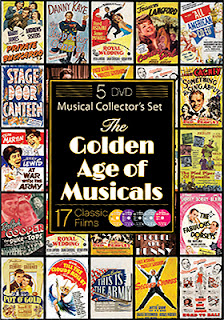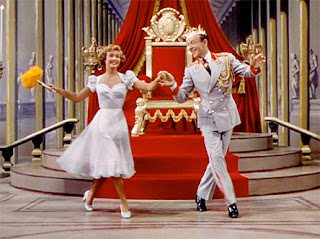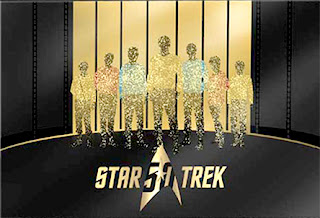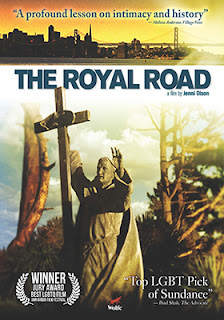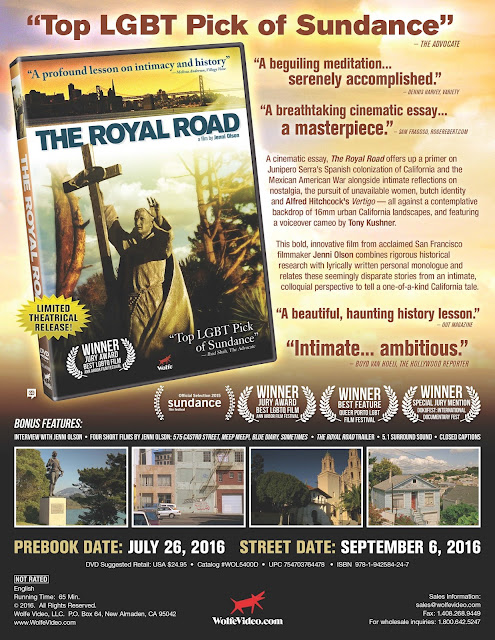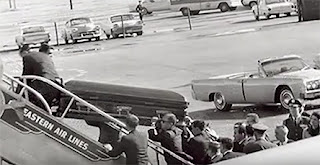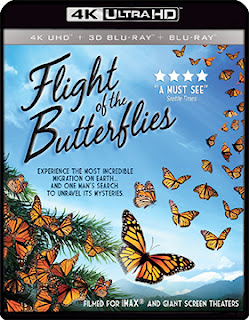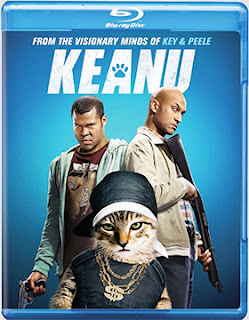The Film Chest will get your toes a’tappin and loosen up
those vocal chords on July 19 with 17 music-themed films — on five discs —
being released as The Golden Age of Musicals.
So what’s in this stellar collection … in chronological
order we find tunes and dance numbers galore:
Something to Sing About (1937), James Cagney stars as a New
York City-based band leader who gets offered a Hollywood contract, but doesn’t
find a place to his liking. Evelyn Daw
co-stars in this rare non-Warner Bros. film (one of two he did for the
short-lived Grand National Pictures) where Cagney gets to sing and dance (a
non-gangster role) … included are “Bridal Chorus” (a dance routine with Cagney
and Daw), “Any Old Love” (song by Cagney) and Daw sings while Cagney dances in
“Out of the Blue” and “Loving You.”
The Duke is Tops (1938) is a black musical starring Duke Davis
and Lena Horne from Million Dollar Productions (specialized in casting black
talent during the pre-war period) as sweethearts who go their separate ways
(doom and gloom), but it all ends on a happy note. Lena Horne is showcased in two numbers — “I
Know You Remember” and “Don't
Let Our Love Song Turn Into a Blues” — plus there are performances by a
half-dozen black groups rarely seen by white audiences during this period.
 Second Chorus (1940) teams Fred Astaire with Paulette Goddard,
with Astaire as a life-long
College or the girl of his dreams … it’s a tough decision! Over a dozen song and dance numbers are
included here.
Second Chorus (1940) teams Fred Astaire with Paulette Goddard,
with Astaire as a life-long
College or the girl of his dreams … it’s a tough decision! Over a dozen song and dance numbers are
included here.
Pot O'Gold (1941) stars Jimmy Stewart and Paulette Goddard in a
fun-filled Irish-themed musical-romantic-comedy (based on a popular radio show
of the time) that features Stewart belting out “When Johnny Toots His Horn” and Goddard teaming with Horace
Heidt & His Musical Knights for renditions of “Pete the Piper” and
“Broadway Caballero.”
All American Co-ed (1941), starring singer Frances Langford as
a college girl who gets caught up in a rival college prank delivered by Johnny
Downs and still manages to get in — between the romance and comedy hijinks —
such songs as “Out of
the Silence,” and “Up at the Crack of Dawn” and teams with Downs for “I'm a
Chap with a Chip on My Shoulder” and “The Poor Farmers Daughter.”
Private Buckaroo (1942), the Andrew Sisters and Harry James and
His Orchestra shine with such delights as “Private Buckaroo,” “Don’t Sit Under the Apple Tree” and
“Three Little Sisters,” plus Donald O’Connor and Peggy Ryan deliver dancing
routines. And be on the lookout for
Three Stooge alumni Shemp Howard and East Side Kid star Huntz Hall in this
all-star musical comedy.
Stage Door Canteen (1943), this all-star musical review from
World War II has a loose plot about a soldier named Dakota (played by William
Terry), who visits a “club” for service men — that is populated by celebrities
(dozens of familiar faces do cameos) — and falls in love (Cheryl Walker). There are something like 18 musical numbers
performed during Dakota’s visit … included are “A Rookie and His Rhythm” (performed by the Kay Kyser Band),
“She's a Bombshell from Brooklyn” (performed by Lina Roman, with backing from The
Xavier Cugat Orchestra) and Ethel Waters delivers “Quick Sands” (with backing
by the Count Basie Orchestra).
This is the Army (1943) is a filmed version of Irving Berlin’s
extremely successful Broadway Play — Berlin provides something like 19 tunes
for this all star musical comedy starring George Murphy, Rosemary DeCamp,
Ronald Reagan and Joan Leslie. Included
in the review are Kate Smith’s rendition of “God Bless America,” George Murphy
singing and dancing with “We're
on Our Way to France” and “My Sweetie,” Frances Langford chimes in with “What
Does He Look Like” and even Irving Berlin gets in the act with “Oh, How I Hate
to Get Up in the Morning” (he is joined by George Murphy, George Tobias and Charles
Butterworth).
 Career Girl (1944), songstress Frances Langford returns, this
time as a young woman trying to break into show business … she sings four songs
during the course of this swiftly-paced film: “A Dream Came True,” “Blue in
Love Again,” “Some Day” and “That's How the Rumba Began.”
Career Girl (1944), songstress Frances Langford returns, this
time as a young woman trying to break into show business … she sings four songs
during the course of this swiftly-paced film: “A Dream Came True,” “Blue in
Love Again,” “Some Day” and “That's How the Rumba Began.”
People are Funny (1946) features Jack Haley and Ozzie Nelson as
radio rivals (the film’s title is based on the Art Linkletter radio show of the
same name), Helen Walker is Nelson’s love interest and Rudy Vallee is the
clueless sponsor that Haley and Nelson are after. Blended in with the hyper comedy elements are
“time outs” for musical numbers, including Frances Langford’s singing “I'm in the Mood for Love” and
The Vagabonds teaming for a trio of numbers.
Till the Clouds Roll By (1946) is the big all-star musical of
the Christmas-season of 1946 which was laced together as a biopic for the
career of Jerome Kern, but was really a showcase for the talents of June
Allyson (“Till the Clouds Roll By” and “Leave it to Jane” with Ray McDonald),
Judy Garland (“Look for the Silver Lining,” “Who?” and “Sunny”), Dinah Shore
(“The Last Time I Saw Paris”), Lena Horne (“Why was I Born?”), Frank Sinatra (“Ol'
Man River”) and more.
The Fabulous Dorseys (1947) stars Tommy and Jimmy Dorsey as
themselves in this United Artists theatrical biopic directed by Alfred E. Green
(who did The Jolson Story the year before). This is a delightful trip down “memory
lane,” which is more or less an excuse to showcase over a dozen musical
numbers, including two sung by Janet Blair — “To Me” and “The Object of My Affection.”
Inspector General (1949), Danny Kaye is a traveling performer
in a “medicine show” who sings a half-dozen songs, romances Barbara Bates and
is mistaken for the Inspector General by corrupt town officials in this Golden
Globe-winner for Best Musical Score.
Co-stars include Walter Slezak, Gene Lockhart, Alan Hale and Elsa
Lanchester.
At War with the Army (1950), a post-war comedy vehicle for Dean
Martin and Jerry Lewis … between comedy bits involving life in boot camp Dean
Martin gets to croon with Polly Bergen with “You and Your Beautiful Eyes” and goes solo with “Too-ra-loo-ra-loo-ral.”
Royal Wedding (1951), directed by Stanley Donen and starring
Fred Astaire and Jane Powell … who could ask for more! Included in the dance routines is Astaire’s
classic dancing on the walls and ceiling of his hotel room (done with a rotating
gimbal) in “You’re All the World to Me” and “Open Your Eyes,” which features
Astaire and Powell in a dance routine on board ship during heavy waves (it’s a
hoot).
Road to Bali (1952) finds Bob Hope, Bing Crosby and Dorothy
Lamore in their sixth “Road” movie (which never left California if the truth be
known) … a half dozen musical number spark this fun comedy, with Crosby going
solo on “To See You” and duets with his sidekick Bob Hope for “Chicago Style,”
“Hoot Mon” and “The Whiffenpoof Song.”
The Pied Piper of Hamelin (1957) is a made-for-television
musical special that aired during Thanksgiving on NBC. Van Johnson stars as the title character,
Lori Nelson is the romantic lead and Claude Rains is the Mayor of Hamelin, with
Doodles Weaver and Kay Starr joining in.
There are a dozen musical numbers included in the festivities — “How Can I Tell You?,” “Feats
of the Piper,” “Fool’s Gold” and “My Heart Will Fly To Heaven” are counted
among these.
